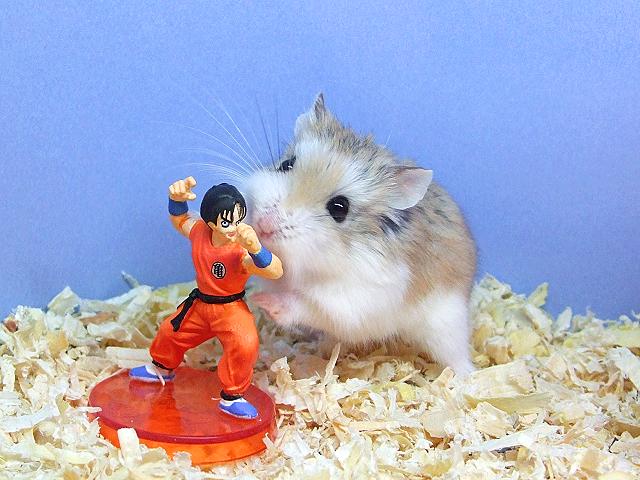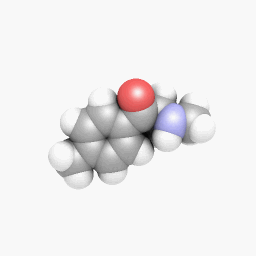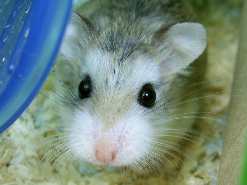Roborovski hamster xiǎo máo zú shǔ 小毛足鼠 "little furry-footed mouse"
The generic word for a hamster is a cāng shǔ 倉鼠 a "warehouse mouse" (referring to the cheek pouches that get packed to near-bursting with grain)
The word for Syria is Xùlìyǎ 敘利亞 so a Syrian hamster is a Xùlìyǎ cāng shǔ 敘利亞倉鼠.
 A dog is a quǎn 犬
A dog is a quǎn 犬
A cat is onomatapoeically a māo 猫
A xióng 熊 is a bear.
A panda is a xióng māo 熊猫 a "bear cat"
A fish is a yú 鱼
A wasp is a huáng fēng 黄蜂 a "yellow bee"
Though you'd actually call a bee a mì fēng 蜜蜂 a "honey bee"
A bumblebee is a dà huáng fēng 大黄蜂 a "big yellow bee"...
A hornet is a mǎ fēng 马蜂 "horse bee"!
The word for a bee, fēng 蜂 is pronounced the same as "wind" fēng 风 as in fēngshuǐ 风水 fengshui ~ "wind-water"!
And that's enough Chinese (Zhōngwén 中文) for one day!
Zàijiàn 再见! (GOODBYE!)
VIDEO: a hǔ tóu fēng 虎頭蜂 "tigerhead bee" in East Anglia, UK!




































2 comments:
Interesting stuff. The language has no semblance to English or the languages from which it was derived. It is a very different language and trying to communicate with Chinese who speak no English or vice versa is nearly impossible.
I once met a Cantonese man in the mental hospital. His only English was "merry Christmas and a happy new year". And it was September. The only conversation we had was along the lines of chow mein, chop suey, kung po ... and other items from the takeaway menu!
Post a Comment